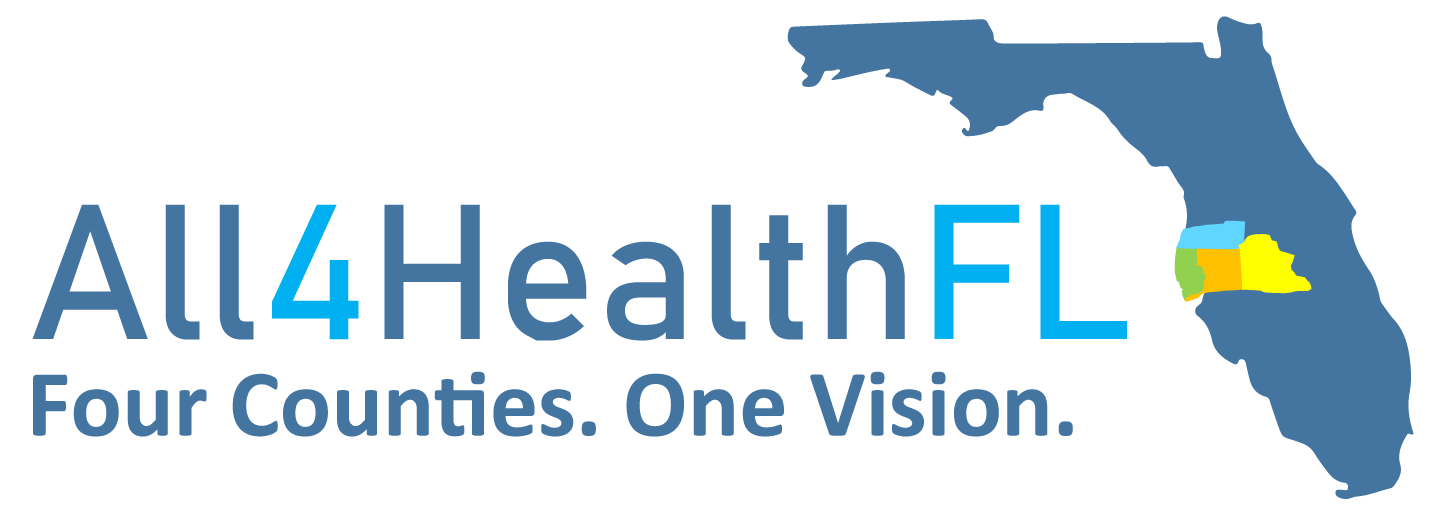Disparities Dashboard
Indicator Gauge Icon Legend
Legend Colors
Red is bad, green is good, blue is not statistically different/neutral.
Compared to Distribution
 the value is in the best half of communities.
the value is in the best half of communities.
 the value is in the 2nd worst quarter of communities.
the value is in the 2nd worst quarter of communities.
 the value is in the worst quarter of communities.
the value is in the worst quarter of communities.
Compared to Target
 meets target;
meets target;  does not meet target.
does not meet target.
Compared to a Single Value
 lower than the comparison value;
lower than the comparison value;
 higher than the comparison value;
higher than the comparison value;
 not statistically different from comparison value.
not statistically different from comparison value.
Trend

 non-significant change over time;
non-significant change over time; 
 significant change over time;
significant change over time;  no change over time.
no change over time.
Compared to Prior Value
 higher than the previous measurement period;
higher than the previous measurement period;
 lower than the previous measurement period;
lower than the previous measurement period;
 no statistically different change from previous measurement period.
no statistically different change from previous measurement period.
 Significantly better than the overall value
Significantly better than the overall value
 Significantly worse than the overall value
Significantly worse than the overall value
 Significantly different than the overall value
Significantly different than the overall value
 No significant difference with the overall value
No significant difference with the overall value
 No data on significance available
No data on significance available
State: Florida
Health / Alcohol & Drug Use
State: Florida Age-Adjusted Drug and Opioid-Involved Overdose Death Rate
State: Florida Age-Adjusted Drug and Opioid-Involved Overdose Death Rate



State: Florida
Health / Cancer
State: Florida Age-Adjusted Death Rate due to Breast Cancer
State: Florida Age-Adjusted Death Rate due to Breast Cancer




State: Florida Age-Adjusted Death Rate due to Cancer
State: Florida Age-Adjusted Death Rate due to Cancer




State: Florida Age-Adjusted Death Rate due to Colorectal Cancer
State: Florida Age-Adjusted Death Rate due to Colorectal Cancer




State: Florida Age-Adjusted Death Rate due to Lung Cancer
State: Florida Age-Adjusted Death Rate due to Lung Cancer




State: Florida Age-Adjusted Death Rate due to Prostate Cancer
State: Florida Age-Adjusted Death Rate due to Prostate Cancer




State: Florida Breast Cancer Incidence Rate
State: Florida Breast Cancer Incidence Rate



State: Florida Cancer: Medicare Population
State: Florida Cancer: Medicare Population
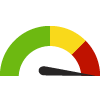



State: Florida Cervical Cancer Incidence Rate
State: Florida Cervical Cancer Incidence Rate



State: Florida Colon Cancer Screening
State: Florida Colon Cancer Screening

State: Florida Colorectal Cancer Incidence Rate
State: Florida Colorectal Cancer Incidence Rate



State: Florida Lung and Bronchus Cancer Incidence Rate
State: Florida Lung and Bronchus Cancer Incidence Rate



State: Florida Mammogram in Past Year: 40+
State: Florida Mammogram in Past Year: 40+

State: Florida Mammography Screening: Medicare Population
State: Florida Mammography Screening: Medicare Population




State: Florida Melanoma Incidence Rate
State: Florida Melanoma Incidence Rate



State: Florida Oral Cavity and Pharynx Cancer Incidence Rate
State: Florida Oral Cavity and Pharynx Cancer Incidence Rate



State: Florida Pap Test in Past Year
State: Florida Pap Test in Past Year

State: Florida Prostate Cancer Incidence Rate
State: Florida Prostate Cancer Incidence Rate



State: Florida
Health / Diabetes
State: Florida Age-Adjusted Death Rate due to Diabetes
State: Florida Age-Adjusted Death Rate due to Diabetes



State: Florida Diabetes: Medicare Population
State: Florida Diabetes: Medicare Population




State: Florida
Health / Disabilities
State: Florida Children with a Disability
State: Florida Children with a Disability


State: Florida Persons with a Cognitive Difficulty
State: Florida Persons with a Cognitive Difficulty


State: Florida Persons with a Disability
State: Florida Persons with a Disability


State: Florida Persons with a Hearing Difficulty
State: Florida Persons with a Hearing Difficulty


State: Florida Persons with a Self-Care Difficulty
State: Florida Persons with a Self-Care Difficulty


State: Florida Persons with a Vision Difficulty
State: Florida Persons with a Vision Difficulty


State: Florida Persons with an Ambulatory Difficulty
State: Florida Persons with an Ambulatory Difficulty


State: Florida
Health / Family Planning
State: Florida Teen Birth Rate: 15-19
State: Florida Teen Birth Rate: 15-19



State: Florida Teens who are Sexually Active
State: Florida Teens who are Sexually Active




State: Florida
Health / Health Care Access & Quality
State: Florida Adults with Health Insurance
State: Florida Adults with Health Insurance




State: Florida Children with Health Insurance
State: Florida Children with Health Insurance




State: Florida Community Spending on Health Care
State: Florida Community Spending on Health Care


State: Florida Health Insurance Spending-to-Income Ratio
State: Florida Health Insurance Spending-to-Income Ratio


State: Florida Persons with Health Insurance
State: Florida Persons with Health Insurance




State: Florida Persons with Private Health Insurance Only
State: Florida Persons with Private Health Insurance Only



State: Florida Persons with Public Health Insurance Only
State: Florida Persons with Public Health Insurance Only



State: Florida Preventable Hospital Stays: Medicare Population
State: Florida Preventable Hospital Stays: Medicare Population




State: Florida
Health / Health Information Technology
State: Florida Persons with an Internet Subscription
State: Florida Persons with an Internet Subscription



State: Florida
Health / Heart Disease & Stroke




State: Florida Age-Adjusted Death Rate due to Coronary Heart Disease
State: Florida Age-Adjusted Death Rate due to Coronary Heart Disease




State: Florida Age-Adjusted Death Rate due to Heart Attack
State: Florida Age-Adjusted Death Rate due to Heart Attack


State: Florida Age-Adjusted Hospitalization Rate due to Heart Attack
State: Florida Age-Adjusted Hospitalization Rate due to Heart Attack


State: Florida Atrial Fibrillation: Medicare Population
State: Florida Atrial Fibrillation: Medicare Population




State: Florida Heart Failure: Medicare Population
State: Florida Heart Failure: Medicare Population
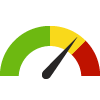



State: Florida High Blood Pressure Prevalence
State: Florida Hyperlipidemia: Medicare Population
State: Florida Hyperlipidemia: Medicare Population




State: Florida Hypertension: Medicare Population
State: Florida Hypertension: Medicare Population




State: Florida Ischemic Heart Disease: Medicare Population
State: Florida Ischemic Heart Disease: Medicare Population




State: Florida Stroke: Medicare Population
State: Florida Stroke: Medicare Population




State: Florida
Health / Immunizations & Infectious Diseases
State: Florida Age-Adjusted Death Rate due to Influenza and Pneumonia
State: Florida Age-Adjusted Death Rate due to Influenza and Pneumonia



State: Florida Flu Vaccinations: Medicare Population
State: Florida Flu Vaccinations: Medicare Population




State: Florida Pneumonia Vaccinations: Medicare Population
State: Florida Pneumonia Vaccinations: Medicare Population




State: Florida
Health / Maternal, Fetal & Infant Health
State: Florida Babies with Low Birthweight
State: Florida Babies with Low Birthweight



State: Florida Infant Mortality Rate
State: Florida Infant Mortality Rate




State: Florida Mothers who Received Early Prenatal Care
State: Florida Mothers who Received Early Prenatal Care



State: Florida Preterm Births
State: Florida Preterm Births




State: Florida
Health / Mental Health & Mental Disorders
State: Florida Age-Adjusted Death Rate due to Suicide
State: Florida Age-Adjusted Death Rate due to Suicide




State: Florida Depression: Medicare Population
State: Florida Depression: Medicare Population




State: Florida High School Students Who Attempted Suicide
State: Florida High School Students Who Attempted Suicide
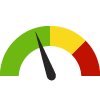



State: Florida
Health / Nutrition & Healthy Eating
State: Florida Teen Fruit Consumption
State: Florida Teen Fruit Consumption


State: Florida Teen Vegetable Consumption
State: Florida Teen Vegetable Consumption




State: Florida
Health / Older Adults
State: Florida Adult Day Care Spending-to-Income Ratio
State: Florida Adult Day Care Spending-to-Income Ratio


State: Florida Adults 65+ with a Disability
State: Florida Adults 65+ with a Disability


State: Florida Adults 65+ with a Hearing Difficulty
State: Florida Adults 65+ with a Hearing Difficulty


State: Florida Adults 65+ with a Self-Care Difficulty
State: Florida Adults 65+ with a Self-Care Difficulty


State: Florida Adults 65+ with a Vision Difficulty
State: Florida Adults 65+ with a Vision Difficulty


State: Florida Adults 65+ with an Independent Living Difficulty
State: Florida Adults 65+ with an Independent Living Difficulty


State: Florida Alzheimer's Disease or Dementia: Medicare Population
State: Florida Alzheimer's Disease or Dementia: Medicare Population




State: Florida
Health / Other Conditions
State: Florida Age-Adjusted Death Rate due to Kidney Disease
State: Florida Age-Adjusted Death Rate due to Kidney Disease




State: Florida Chronic Kidney Disease: Medicare Population
State: Florida Chronic Kidney Disease: Medicare Population




State: Florida Osteoporosis: Medicare Population
State: Florida Osteoporosis: Medicare Population




State: Florida Rheumatoid Arthritis or Osteoarthritis: Medicare Population
State: Florida Rheumatoid Arthritis or Osteoarthritis: Medicare Population




State: Florida
Health / Physical Activity
State: Florida Adults who are Sedentary




State: Florida
Health / Prevention & Safety
State: Florida Age-Adjusted Death Rate due to Firearms
State: Florida Age-Adjusted Death Rate due to Firearms





State: Florida Age-Adjusted Death Rate due to Unintentional Injuries
State: Florida Age-Adjusted Death Rate due to Unintentional Injuries




State: Florida
Health / Respiratory Diseases
State: Florida Asthma: Medicare Population
State: Florida Asthma: Medicare Population




State: Florida COPD: Medicare Population
State: Florida COPD: Medicare Population




State: Florida
Health / Sexually Transmitted Infections
State: Florida HIV Incidence Rate
State: Florida HIV Incidence Rate


State: Florida
Health / Tobacco Use
State: Florida Adults who Smoke
State: Florida Adults who Smoke

State: Florida Cigarette Spending-to-Income Ratio
State: Florida Cigarette Spending-to-Income Ratio


State: Florida
Health / Weight Status
State: Florida High School Students who are Overweight
State: Florida High School Students who are Overweight




State: Florida High School Students who are Overweight or Obese
State: Florida High School Students who are Overweight or Obese




State: Florida
Community / Crime & Crime Prevention
State: Florida Age-Adjusted Death Rate due to Homicide
State: Florida Age-Adjusted Death Rate due to Homicide





State: Florida
Community / Demographics
State: Florida Foreign Born Persons
State: Florida Foreign Born Persons


State: Florida Veteran Population
State: Florida Veteran Population


State: Florida
Community / Public Safety
State: Florida Age-Adjusted Death Rate due to Motor Vehicle Collisions
State: Florida Age-Adjusted Death Rate due to Motor Vehicle Collisions


State: Florida
Community / Transportation
State: Florida Community Spending on Transportation
State: Florida Community Spending on Transportation


State: Florida Gasoline and Other Fuels Spending-to-Income Ratio
State: Florida Gasoline and Other Fuels Spending-to-Income Ratio


State: Florida Households without a Vehicle
State: Florida Households without a Vehicle



State: Florida Mean Travel Time to Work
State: Florida Mean Travel Time to Work



State: Florida Workers Commuting by Public Transportation
State: Florida Workers Commuting by Public Transportation




State: Florida Workers who Drive Alone to Work
State: Florida Workers who Drive Alone to Work



State: Florida
Economy / Food Insecurity
State: Florida Community Spending on Food
State: Florida Community Spending on Food


State: Florida
Economy / Housing & Homes
State: Florida Community Spending on Housing
State: Florida Community Spending on Housing


State: Florida Home Renter Spending-to-Income Ratio
State: Florida Home Renter Spending-to-Income Ratio


State: Florida Homeowner Spending-to-Income Ratio
State: Florida Homeowner Spending-to-Income Ratio


State: Florida Overcrowded Households
State: Florida Overcrowded Households


State: Florida Renters Spending 30% or More of Household Income on Rent
State: Florida Renters Spending 30% or More of Household Income on Rent




State: Florida Utilities Spending-to-Income Ratio
State: Florida Utilities Spending-to-Income Ratio


State: Florida
Economy / Income
State: Florida Median Household Income
State: Florida Median Household Income



State: Florida Per Capita Income
State: Florida Per Capita Income



State: Florida
Economy / Poverty
State: Florida Children Living Below Poverty Level
State: Florida Children Living Below Poverty Level



State: Florida Families Living Below Poverty Level
State: Florida Families Living Below Poverty Level



State: Florida People 65+ Living Below Poverty Level
State: Florida People 65+ Living Below Poverty Level



State: Florida People 65+ Living Below Poverty Level (Count)
State: Florida People 65+ Living Below Poverty Level (Count)

State: Florida People Living Below Poverty Level
State: Florida People Living Below Poverty Level




State: Florida Youth not in School or Working
State: Florida Youth not in School or Working
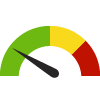


State: Florida
Education / Childcare & Early Childhood Education
State: Florida Day Care Center and Preschool Spending-to-Income Ratio
State: Florida Day Care Center and Preschool Spending-to-Income Ratio


State: Florida Home Child Care Spending-to-Income Ratio
State: Florida Home Child Care Spending-to-Income Ratio


State: Florida
Education / Educational Attainment
State: Florida College Tuition Spending-to-Income Ratio
State: Florida College Tuition Spending-to-Income Ratio


State: Florida Community Spending on Education
State: Florida Community Spending on Education


State: Florida People 25+ with a Bachelor's Degree or Higher
State: Florida People 25+ with a Bachelor's Degree or Higher



State: Florida People 25+ with a High School Diploma or Higher
State: Florida People 25+ with a High School Diploma or Higher



State: Florida Student Loan Spending-to-Income Ratio
State: Florida Student Loan Spending-to-Income Ratio




State: Florida
Education / Student Performance K-12
State: Florida High School Graduation
State: Florida High School Graduation




State: Florida
Environmental Health / Built Environment
State: Florida Access to Parks
State: Florida Access to Parks

